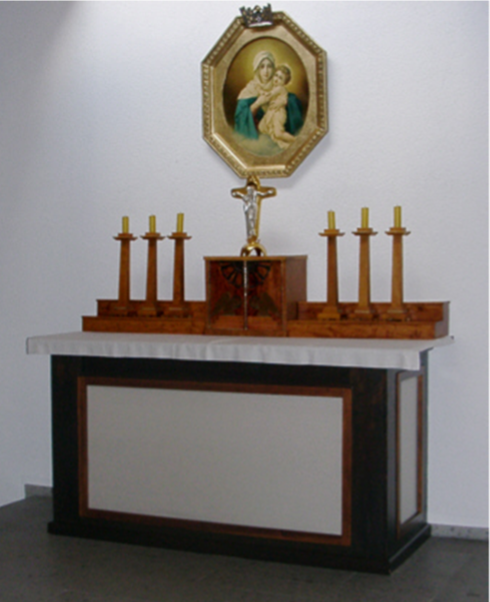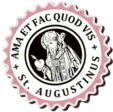Summer Pilgrimage - 2024
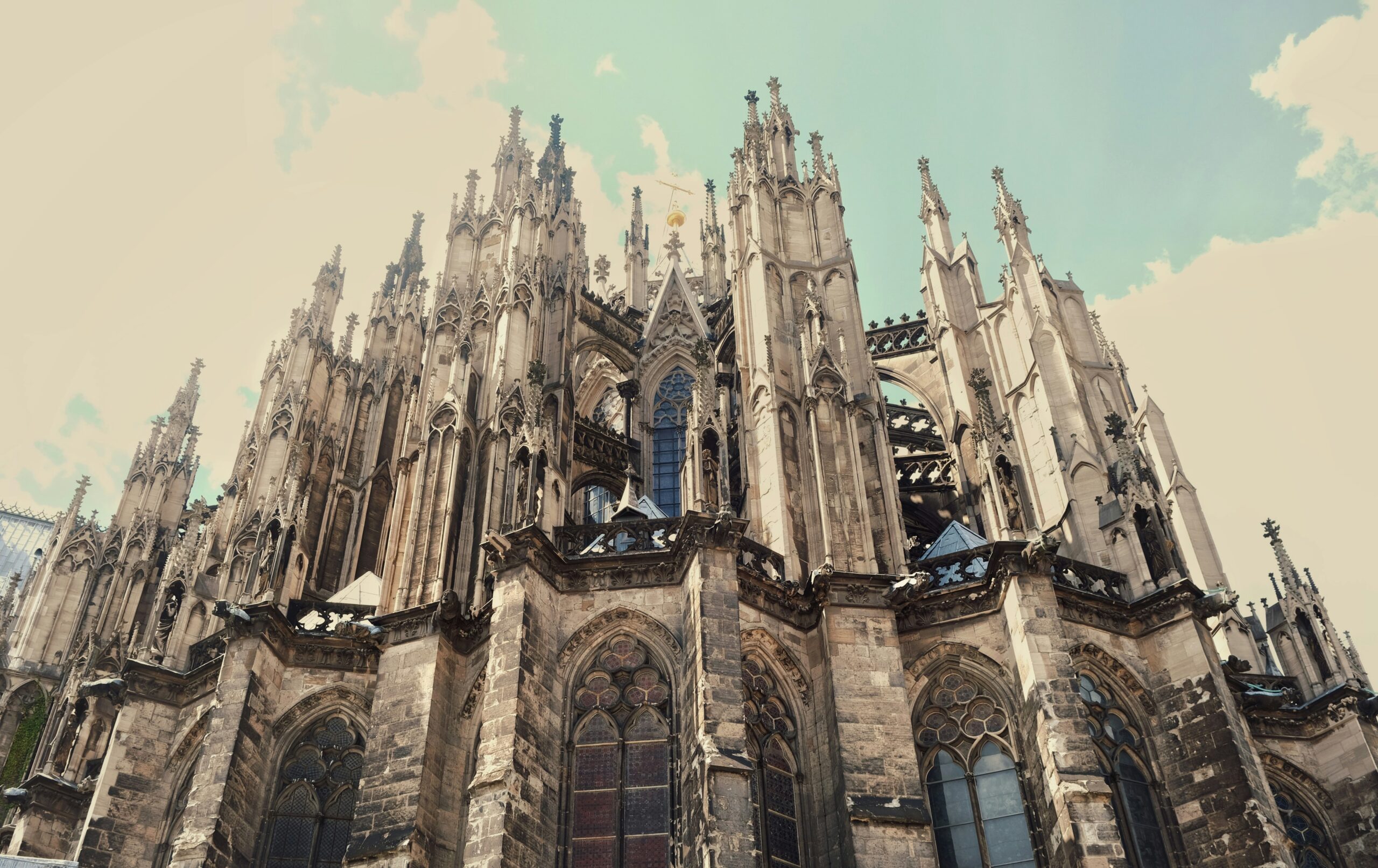
To honour our tradition, Fr. Arjen has organized another summer pilgrimage. This time around, our journey takes us to Germany. Together, we’ll explore the captivating cities of Cologne, Koblenz, and Trier, and enjoy the beautiful scenery alongside the Moselle and Rhine rivers, with plenty of time, of course, for prayer and devotion.
In this page, you will find a breakdown of the itinerary, tentative dates, and the cost of the trip (including travel, hotel, breakfast and the occasional lunch or dinner).
Tuesday July 9
Around 8 o’clock: Departure from the cathedral, where we’ll say a travel prayer, heading towards Koblenz. Along the way, we’ll visit the ancient Benedictine abbey of Maria Laach, situated by the Laachsee lake. We’ll have time to explore the abbey church and buildings, browse the bookstore with religious items, and grab a bite to eat and drink at the monastery restaurant.
Afterwards, we’ll continue our journey to Koblenz-Vallendar, where we’ll stay at Haus Sonnenau for the next few days. Vallendar is home to the pilgrimage site of Schönstatt, dedicated to honoring Mary as the Mother Thrice Admirable. We’ll celebrate Mass in the Grace Chapel of Schönstatt on the first day. Additionally, there will be time to explore the surroundings and perhaps visit the Catholic University of the Pallottines.
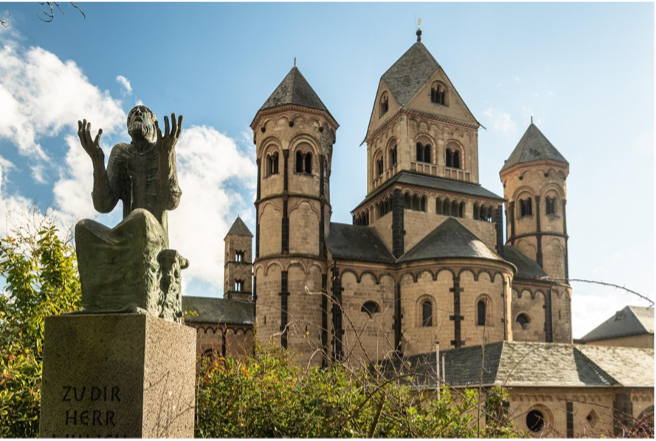
Wednesday July 10
Early in the morning, we depart by train for Cologne. The train journey takes about an hour. Cologne’s main train station is right next to the Cathedral. In this magnificent cathedral, the largest in Germany, we will celebrate Mass. The Cathedral houses the relics of the Three Kings, which rest in the 12th-century Shrine of the Three Kings crafted by the skilled metalsmith Nicolas of Verdun. This shrine is one of the most important metalwork pieces of the 12th century and reflects the Maasland style. There’s an opportunity to visit the Dombauhütte and take a look around at your leisure.
Adjacent to the Cathedral is the St. Andreas Church. This 12th-century basilica is the resting place of Saint Albertus Magnus. A visit to this Dominican church and this saint is essential when in Cologne. Additionally, Cologne boasts numerous fascinating churches, with twelve basilicas alone located in the old city center. Particularly noteworthy is the Church of Saint Ursula, housing a reliquary chamber containing the remains of Saint Ursula and her 11,000 virgin companions. This golden chamber is truly worth a visit. If the weather is inclement, a visit to the Schnütgen Museum is recommended, as it houses one of the most significant collections of medieval religious art.
Time for a stroll along the Rhine, exploring the old town, and enjoying a drink is, of course, also planned. It’s likely possible to visit one of the city’s oldest pilgrimage madonnas at the Church of Mary in the Kupfergasse too.
After dinner, we’ll begin our journey back to Vallendar/Schönstatt
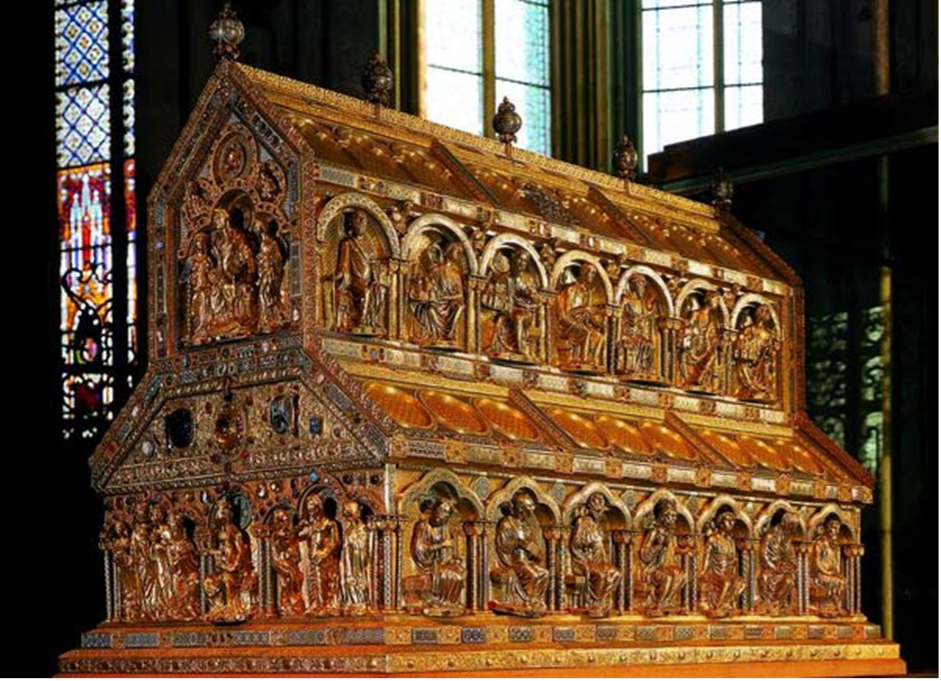
Thursday July 11
Koblenz is nestled in a stunning landscape. The Moselle Valley is nearby and truly worth exploring. Thursday is dedicated to an excursion through the countryside and nature. Our itinerary includes a visit to Burg Elz, one of the best-preserved medieval castles. You’ll enjoy a guided tour of the castle, including the armory and treasury. Afterwards, we’ll continue our journey through the surroundings and pay a visit to a pilgrimage site. This could be Klausen, an ancient pilgrimage site run by Dominican fathers, or we might opt for the more modern Maria Martental, where the Sacred Heart Fathers have built a contemporary pilgrimage site around a medieval Pieta. We’ll celebrate Mass at the pilgrimage site. Perhaps we’ll have the opportunity to join the sisters of Maria Himmelsport for one of their prayer services. This convent has seen a revival with the recent arrival of a young religious community, ensuring its future. Along the way, we’ll meander with the river, passing through charming old towns like Bernkastel-Kues, and enjoying scenic viewpoints. We’ll dine en route or perhaps have a barbecue in Schönstatt in the evening.
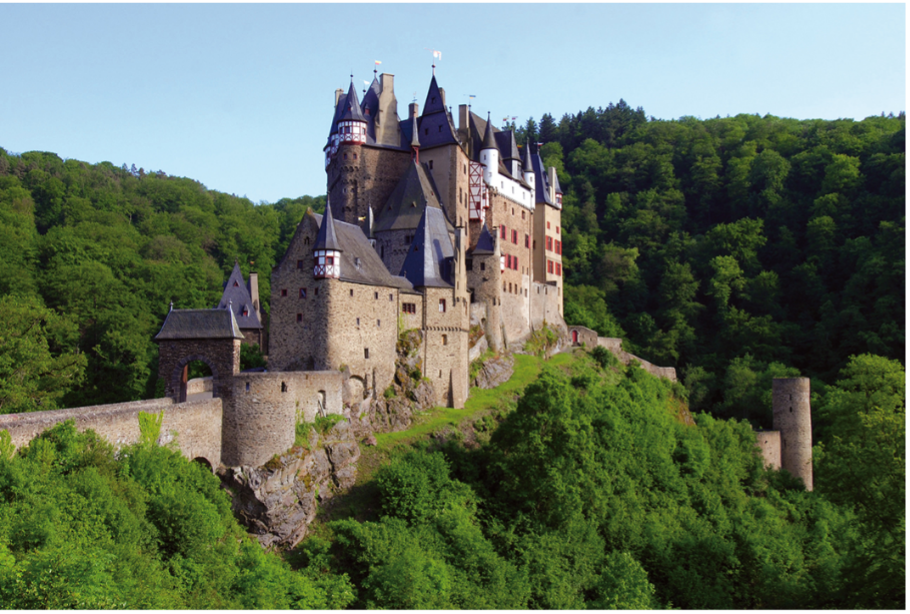
Friday July 12
Today, we’re heading to the ancient imperial city where traces of Constantine and his mother Helena are still visible. In the past, entering the city meant passing through the Porta Nigra, which is now the oldest and largest Roman structure in Germany. You can see that the Porta Nigra was built in the same way as the Colosseum in Rome, with large blocks of sandstone connected by iron. Another noteworthy site is the basilica where Constantine held court, later transformed into a church.
However, the most important church is the oldest cathedral in Germany, St. Peter’s, where the Holy Robe, the garment worn by Christ, is preserved. We’ll only be able to see the shrine; the public display of the Holy Robe itself typically occurs only three times a century. In the cathedral’s treasury, you’ll find other significant relics, such as the foot of the Holy Apostle Andrew and one of the nails used in Christ’s crucifixion. This wealth of relics speaks to Trier’s importance within the Roman Empire. Constantine donated numerous relics to the city, hoping to promote the Christianization of the area.
Moreover, Trier is home to the only apostle’s tomb north of the Alps. The Benedictine Abbey houses the tomb of Matthias, which we’ll also visit. We’ll participate in the abbey’s prayer times if possible. Mass will be celebrated either in the cathedral church or in the Abbey of St. Matthias on this day.
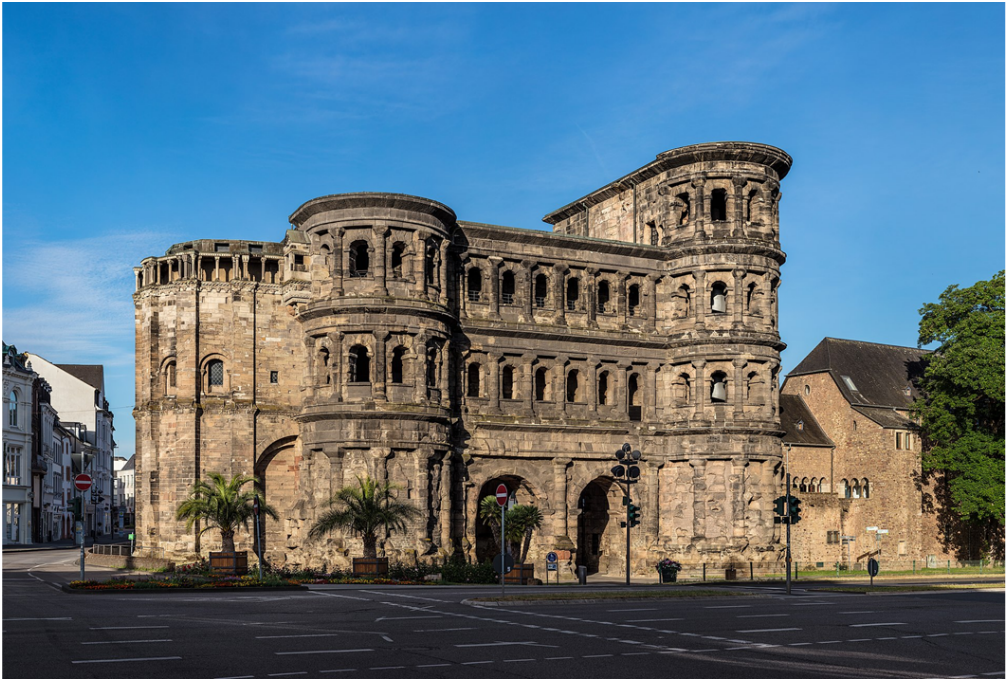
Saturday July 13
In the morning, we’ll need to pack our belongings and prepare for the journey home. We won’t have to leave very early. On the last day, we’ll visit the contemplative house Berg Moriah. In the chapel there, a special altar is preserved. In the Dachau concentration camp, there was a barrack designated solely for Catholic priests and religious. From 1942, this barrack also had a chapel where Mass was celebrated daily. Due to Schönstatt’s connection with several martyrs of World War II, opponents of the Nazi regime, the altar from Dachau eventually came to Schönstatt. We will celebrate Mass at this altar, where Titus Brandsma and Karl Leisner, among others, also celebrated the Eucharist.
Afterwards, we must begin our journey home no later than noon, so we can arrive back in Groningen around 6 o’clock.
